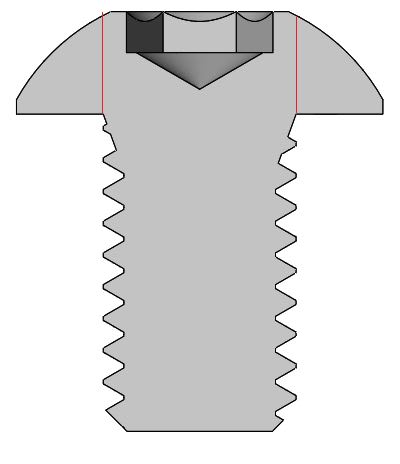eli28
Aerospace
- Oct 20, 2019
- 109
Hello everyone,
I have to design a bolt made of a material that isn't available in the market and in addition has to be a hex socket button head cap screw. I know that this type of screws has reduced tightening capability that are given in standard table for common materials. In addition I heard (I am not sure it's true) that in this case (low profile and minimized bolt head) the weak chain is the bolt head, and that's the torque is calculated with intention not to yield the bolt head and not the threaded shaft portion. In my case I have to calculate the allowed torque (derived from the axial tension and shear due to torque application) by myself. The problem is that in any design book the focus is on traditional hex head and in these case the strength of the threaded part and the thread teeth are taken into account for determining the allowed torque, and there is nothing about the bolt's head strength.
Is there any design factor taken when dealing with low profile head? Does anyone can refer me to a reference explaining it?
Thanks!
I have to design a bolt made of a material that isn't available in the market and in addition has to be a hex socket button head cap screw. I know that this type of screws has reduced tightening capability that are given in standard table for common materials. In addition I heard (I am not sure it's true) that in this case (low profile and minimized bolt head) the weak chain is the bolt head, and that's the torque is calculated with intention not to yield the bolt head and not the threaded shaft portion. In my case I have to calculate the allowed torque (derived from the axial tension and shear due to torque application) by myself. The problem is that in any design book the focus is on traditional hex head and in these case the strength of the threaded part and the thread teeth are taken into account for determining the allowed torque, and there is nothing about the bolt's head strength.
Is there any design factor taken when dealing with low profile head? Does anyone can refer me to a reference explaining it?
Thanks!





